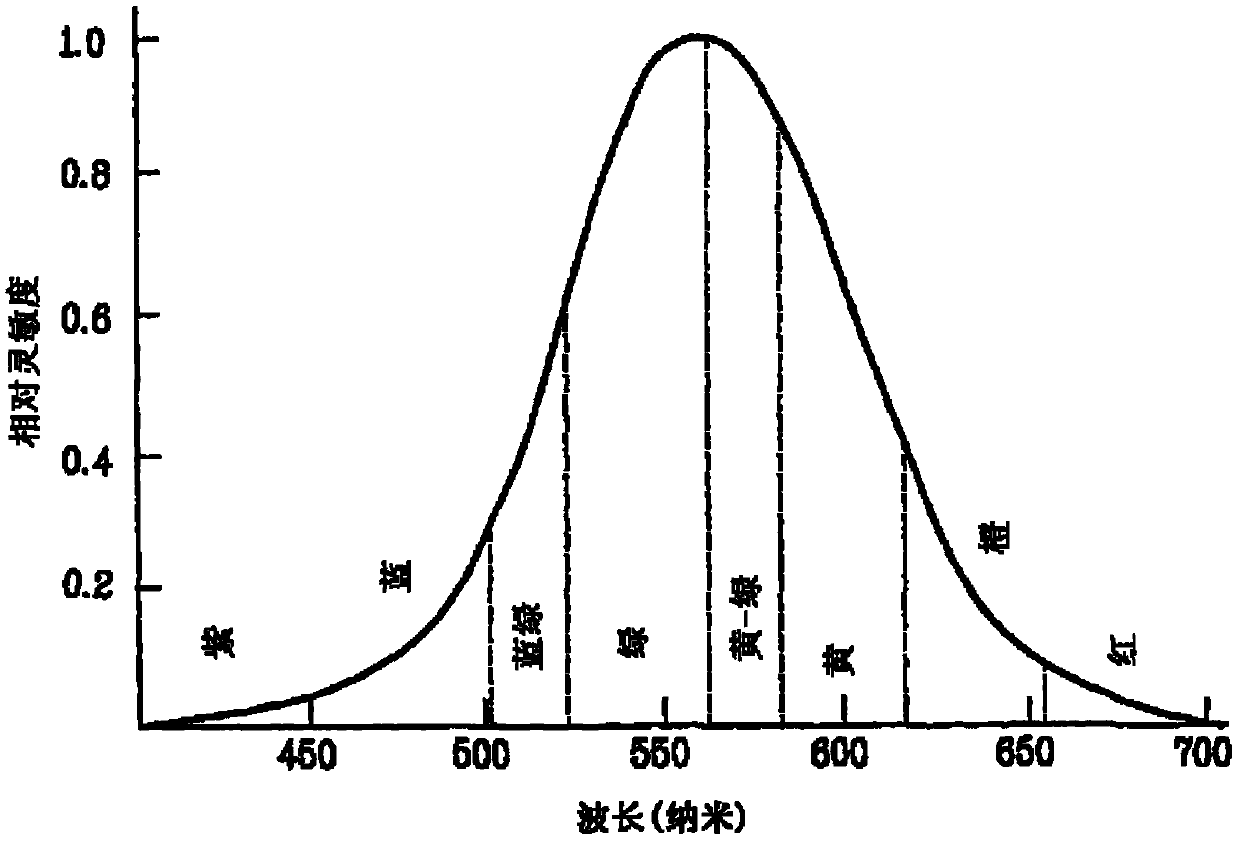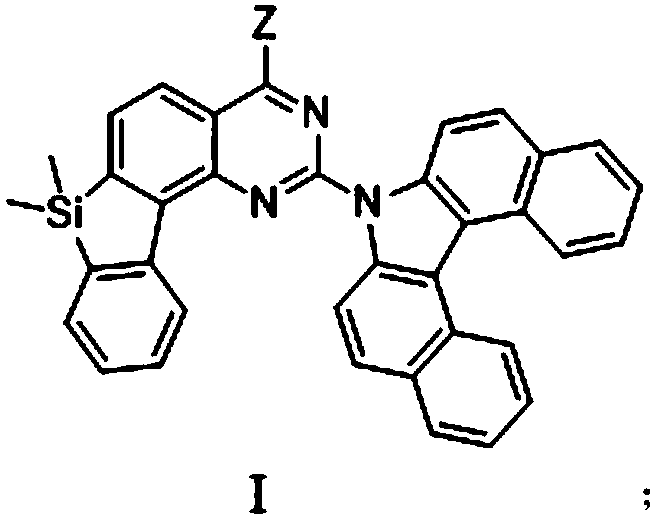Phosphorescence host compound and organic electroluminescence device using same
A phosphorescent subject and compound technology, applied in the field of OLED devices, can solve the problems of complex manufacturing process, increased production cost, and lack of solubility, etc., and achieve the effects of prolonged durability, excellent color purity and brightness
- Summary
- Abstract
- Description
- Claims
- Application Information
AI Technical Summary
Problems solved by technology
Method used
Image
Examples
no. 1 approach
[0084] The ITO glass substrate was patterned to have a light emitting area of 3 mm x 3 mm. Then, the patterned ITO glass substrate was washed.
[0085] The substrate is then placed in a vacuum chamber. The standard pressure setting is 1×10 -6 support. After that, on the ITO substrate with
[0086] and The sequence forms layers of organic matter.
[0087] At 0.9mA, the brightness is equal to 1237cd / m 2 (5.8V). At this time, CIEx=0.659, y=0.330.
no. 2 approach
[0089] The ITO glass substrate was patterned to have a light emitting area of 3 mm x 3 mm. Then, the patterned ITO glass substrate was washed.
[0090] The substrate is then placed in a vacuum chamber. The standard pressure setting is 1×10 -6 support. After that, on the ITO substrate with
[0091] and The sequence forms layers of organic matter.
[0092] At 0.9mA, the brightness is equal to 1184cd / m 2 (5.9V). At this time, CIEx=0.660, y=0.329.
no. 3 approach
[0094] The ITO glass substrate was patterned to have a light emitting area of 3 mm x 3 mm. Then, the patterned ITO glass substrate was washed.
[0095] The substrate is then placed in a vacuum chamber. The standard pressure setting is 1×10 -6 support. After that, on the ITO substrate with
[0096] and The sequence forms layers of organic matter.
[0097] At 0.9mA, the brightness is equal to 1259cd / m 2 (5.9V). At this time, CIEx=0.659, y=0.329.
PUM
 Login to View More
Login to View More Abstract
Description
Claims
Application Information
 Login to View More
Login to View More - Generate Ideas
- Intellectual Property
- Life Sciences
- Materials
- Tech Scout
- Unparalleled Data Quality
- Higher Quality Content
- 60% Fewer Hallucinations
Browse by: Latest US Patents, China's latest patents, Technical Efficacy Thesaurus, Application Domain, Technology Topic, Popular Technical Reports.
© 2025 PatSnap. All rights reserved.Legal|Privacy policy|Modern Slavery Act Transparency Statement|Sitemap|About US| Contact US: help@patsnap.com



